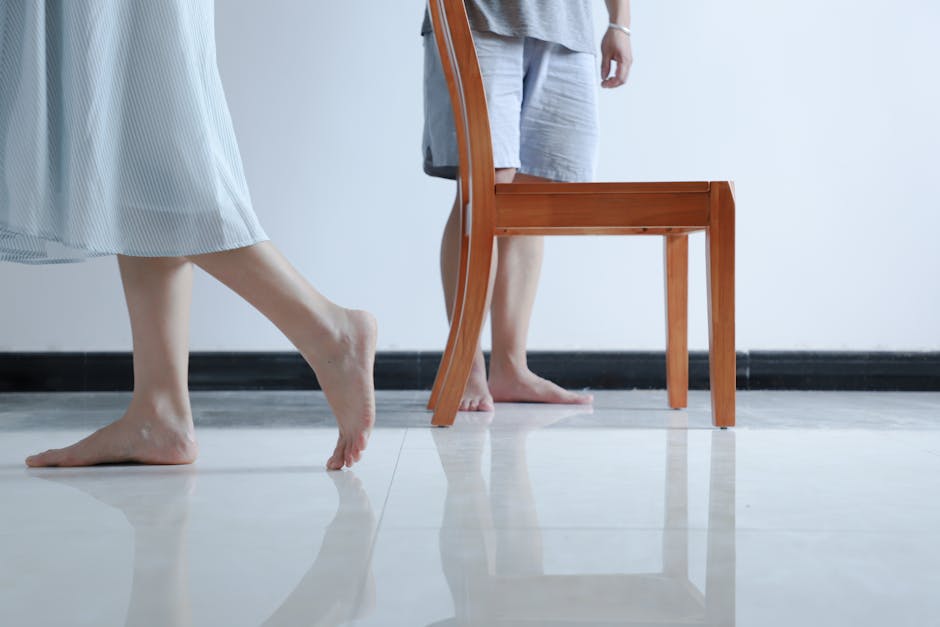How to Upholster a Chair in Easy Steps
Have you ever looked at an old chair and thought it could use a fresh look? Upholstering a chair might seem daunting, but it’s an achievable project that can transform your furniture. Plus, it saves money compared to buying new chairs. Lets dive into how you can easily upholster a chair yourself!
Why Upholster a Chair?

Upholstering is a great way to breathe new life into your furniture. It allows you to:
- Choose fabrics that match your style.
- Repair worn-out seating.
- Give old furniture a modern twist.
Did you know that the average person spends over 3 hours a day sitting? Having a comfortable and stylish chair makes all that sitting much more enjoyable!
What Tools Do You Need?

Before you start, gather your tools. Heres a simple list:
- Fabric (enough to cover your chair)
- Staple gun and staples
- Scissors
- Foam padding (if needed)
- Screwdriver
- Measuring tape
- Fabric glue (optional)
Having everything ready will make your project go smoothly. Now, lets get started!
Step 1: Choose Your Fabric

Selecting the right fabric is crucial. Consider durability, color, and texture. For example, if you have kids or pets, a sturdy fabric like canvas or microfiber might be best. If it’s just for show, you can opt for something softer and prettier, like velvet.
Take swatches home to see how they look in your space. This small step can make a big difference!
Step 2: Remove the Old Upholstery

Ready to dig in? Start by carefully removing the old upholstery. Use a screwdriver to take off any screws holding the seat in place. Heres how:
- Flip the chair upside down.
- Remove staples and tacks using a flathead screwdriver.
- Carefully pull off the old fabric.
don’t rush this step. Take your time to avoid damaging the frame. You can also take notes or photos of how everything is attached for reference.
Step 3: Inspect and Repair the Frame
Once youve removed the old fabric, check the chairs frame. Look for any broken parts or loose joints. Tighten screws or use wood glue on loose joints.
Now is also a great time to replace any worn-out foam padding. If the padding is flat, consider adding new foam for extra comfort.
Step 4: Cut Your New Fabric
it’s time to cut the new fabric. Measure the chairs seat and back carefully. Add a few extra inches to each side for wrapping around the edges.
For example, if your seat measures 20 inches square, cut your fabric to 24 inches square. This extra material will give you enough to fold under and staple.
Step 5: Attach the New Fabric
Now comes the fun part! Lay your new fabric over the chair, ensuring it’s centered. Begin stapling from the middle of one side, pulling the fabric tight as you go.
Follow these steps:
- Start at the center of one side.
- Pull the fabric tightly and staple it down.
- Move to the opposite side and repeat.
- Do the same for the other two sides.
- Finish by stapling the corners neatly.
don’t worry if it’s not perfect; just make sure it’s secure and smooth!
Step 6: Reattach the Seat
Once the fabric is in place, reattach the seat to the frame. Use the screws you removed earlier. Make sure everything is tight and secure.
Take a moment to step back and admire your work. you’re almost there!
Step 7: Finishing Touches
Now, lets add those finishing touches. Trim any excess fabric around the edges for a clean look. You can also use a fabric glue for any loose corners.
Consider adding some decorative elements, like a trim or new legs, to elevate the design. This is where you can really personalize your chair!
How to Care for Your Newly Upholstered Chair?
Your chair looks fantastic! But how do you keep it that way? Here are some tips:
- Vacuum regularly to remove dust and crumbs.
- Use fabric cleaner for spills and stains.
- Keep it out of direct sunlight to prevent fading.
With a little care, your newly upholstered chair can last for years!
Common Mistakes to Avoid
As a beginner, it’s easy to make mistakes. Here are some common pitfalls to watch out for:
- Rushing the removal of old fabric can damage the frame.
- Not measuring fabric correctly leads to shortages.
- Skipping the inspection of the frame might result in a wobbly chair.
Learning from these mistakes will make your future projects even easier!
Conclusion: Your New Chair Awaits
Upholstering a chair is not only a rewarding project but also a great way to express your style. With a few simple steps, you can turn an old piece of furniture into something beautiful and functional.
So, gather your tools, pick your fabric, and get started! The journey might seem challenging, but the satisfaction of creating something with your own hands is unmatched.
If you want to dive deeper into DIY projects, check out our post on DIY Home Projects. Happy upholstering!



